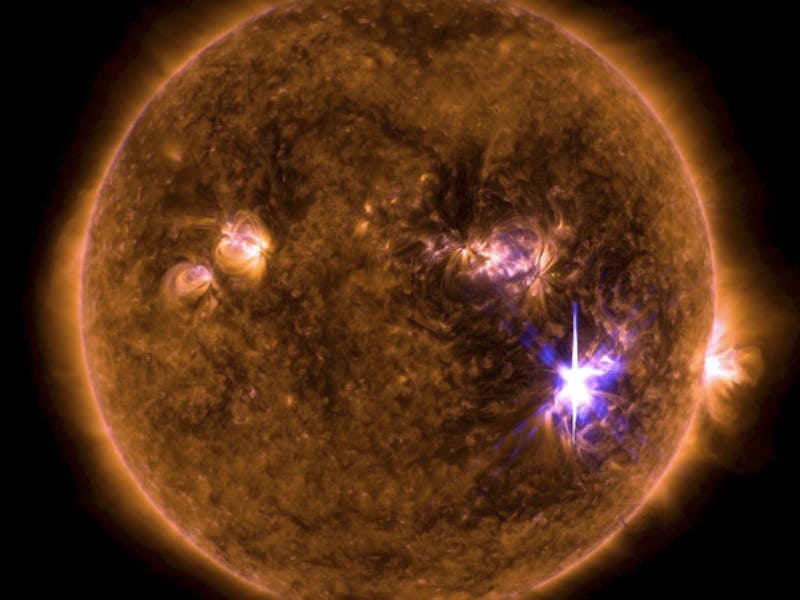NASA Captures Wild Images of Solar Flares on the Sun
The Sun had a big week.

The sun was particularly lit this week, emitting several dramatic solar flares over a matter of days.
NASA was on hand to capture each event, starting on September 4, when the sun emitted a mid-level flare at 4:33 pm Eastern Time. The Solar Dynamics Observatory, which is constantly monitoring the sun, recorder the event.
What exactly is a solar flare? They likely result from the sun’s magnetic field changing shape; built up magnetic energy is suddenly released in the form of a “flare” and radiation is emitted from our star. Although the radiation isn’t powerful enough to pass through Earth’s atmosphere and harm humans in a physical way, it can manage to mess with GPS and radio technology.
On the morning of September 6, two more solar flares occurred, and these ones were big, They fell into NASA’s X category, at X2.2 and X9.3 measurements — the second being one of the strongest ever recorded. An X is the most intense level for solar flares; the flare on September 4 was an M-level flare, at one tenth the size of an X. To give you a further idea of the measurement, an X2 is twice as intense as an X1, and an X3 is three times as intense, etc.
An X9.3 class solar flare flash caught by NASA on Sept. 6, 2017. The image, captured by the Solar Dynamics Observatory, shows a blend of light from the 171 and 131 angstrom wavelengths.
Both the X-class flares erupted in the same active region as the M-class flare, an area known as AR 2673.
After the flares occurred, high frequency radios on the side of the Earth facing the sun stopped working momentarily, and GPS communications were interrupted for an hour, according to New Scientist.
In case you weren't yet intimidated by the Sun's power, here is a graphic that shows Earth to scale beside the September 6 solar flare.
The following morning (September 7), a mid level and a powerful solar flare occurred yet again. The first was at a M7.3 level, which the second reached X1.3.
An image of the Sept. 7 X1.3 solar flare captured by the Solar Dynamics Observatory in extreme ultraviolet light.
And finally at 3:49 a.m. Eastern on September 8, we got a final flare from the sun; this one only reaching a level of M8.1.
A close up image of the solar flare on August 8.
In the midst of increasing climate change and human destruction of our own planet, it’s strangely comforting to know we actually have nothing to do with what’s going on over at the sun. We just get to sit back and watch.
Must Read: If the Sun Explodes, We’ll Have Just Enough Time to Scream